
Longview, Texas-based heavy equipment manufacturer LeTourneau has been making crazy machines since 1929. Today, they mainly produce some of the largest front-end wheel loaders in the world:
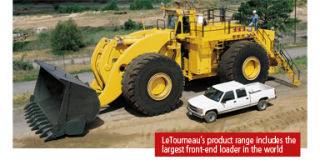
But in the 1950's, they were making the longest off-road vehicles in the world. It all started as a way to solve the problems associated with hauling trees out of the bush in areas without developed roads that conventional logging trucks could drive on. Engineers at LeTourneau had the idea of using a diesel-electric drivetrain, and built a few different 6x6's using this technology.The problem was, these vehicles were too small to carry a lot of logs. Their solution was to add several trailers behind the locomotive, each with their own electric drive motors powered by the locomotive’s 500 hp Cummins Vt-12 engine. This first overland train was called the VC-12:
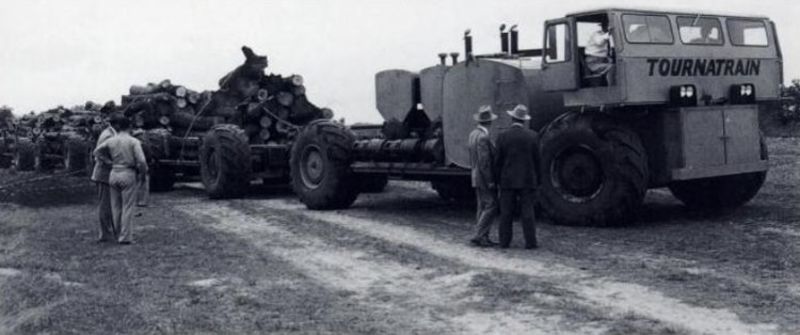
It was first tested in 1953, and after a few months they added four more trailers, with the last one having a second diesel engine at the end for more power. It was finally completed in 1954.
Around this time, the U.S. and Canada were developing the DEW Line:
It was located in areas with no roads, very few airbases, and enough ice that reaching them with ships was often too difficult. Western Electric had made a contract with Alaska Freight Lines to deliver 500 tons of equipment to the DEW stations being built. After hearing about LeTourneau’s VC-12, they made a contract with LeTourneau to build the VC-22 Sno-Freighter to deliver the equipment. And so began the construction of LeTourneau’s second overland train:
Completed in 1955, this 54 wheel drive monster was a bit bigger than the previous overland train, but still based on existing components from other LeTourneau vehicles, and so they were able build it surprisingly quickly. For its first season of use, it performed very well and delivered much equipment, though in its second season, a fire broke out in the engine compartment, ruining the generator. When Western Electric’s contract ran out, they abandoned it. The trailers were all scrapped, but the locomotive still sits forlorn by the side of the highway just outside of Fairbanks, Alaska.
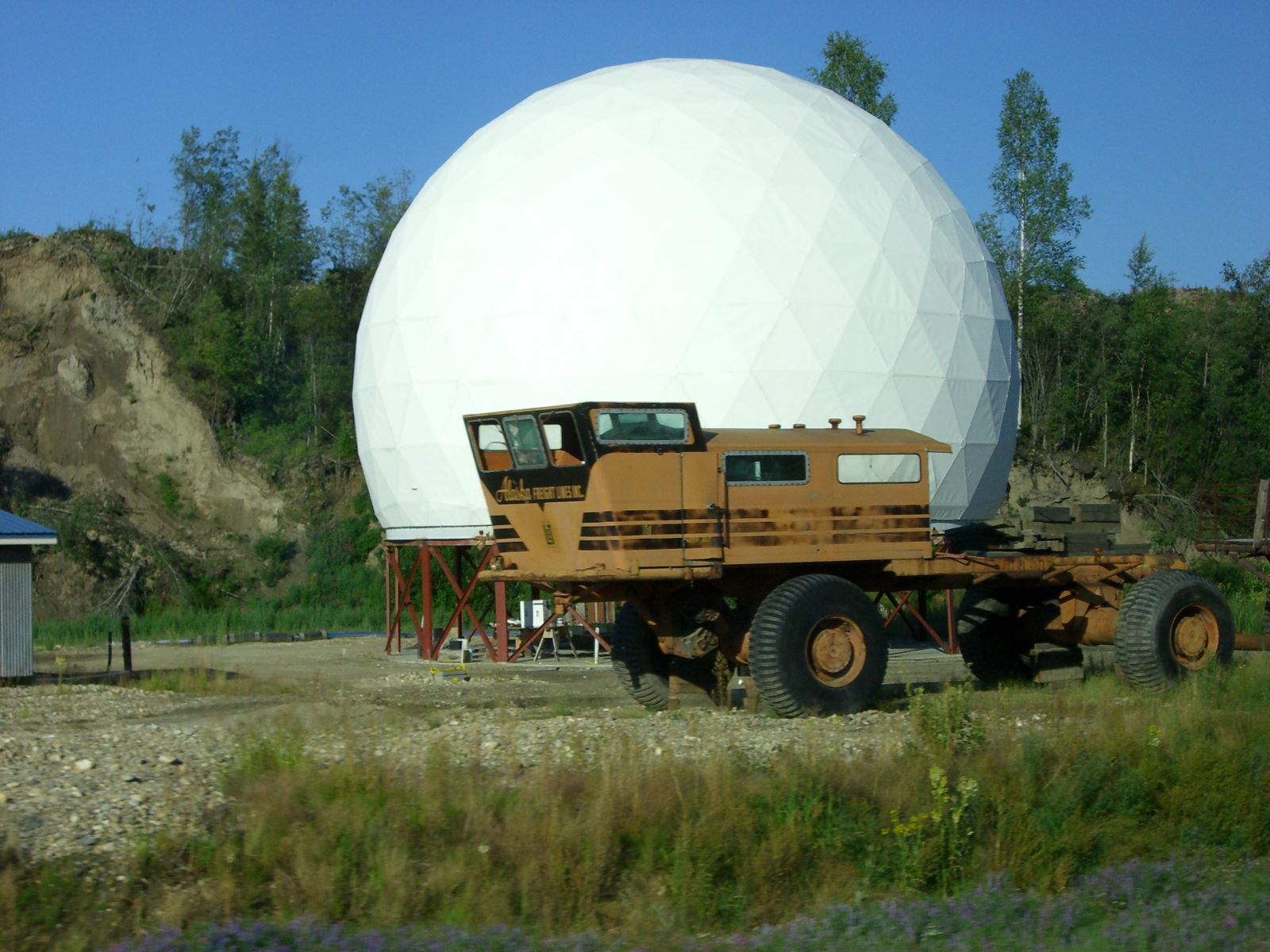
LeTourneau reused much of the design of the Sno-Freighter to build a side-dumper overland train, although because of another contract with Western Electric, they never ended up selling it:
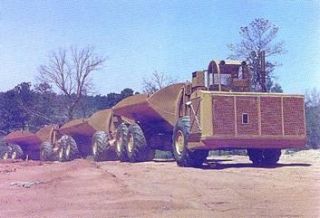
However, at the same time they had been building the Sno-Freighter, the US Army Transportation Research and Development Command (TRADCOM) had seen the capabilities of the VC-12 and ordered a similar vehicle with more tires and no trailers to be built for logistical purposes. It had eight massive, doubled-up 120-inch tires, which allowed it to float over the soft tundra with ease. It was called the TC-264 Sno-Buggy, and the Army Transportation Corps was impressed.
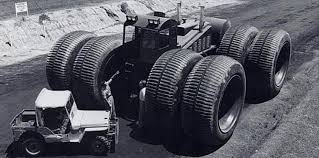
Wanting a vehicle that combined the capabilities of both the Sno-Buggy and the overland trains, they asked LeTourneau to build one for them. LeTourneau referred to this new overland train as the Ys-1 Army Sno-Train, but the army referred to it as the LCC-1. They actually started building it before the VC-22, but it required much more customization and wasn’t completed until 1956. Combining the drivetrain of the VC overland trains with the wheels of the Sno-Buggy, it had three trailers and 16 wheel drive.
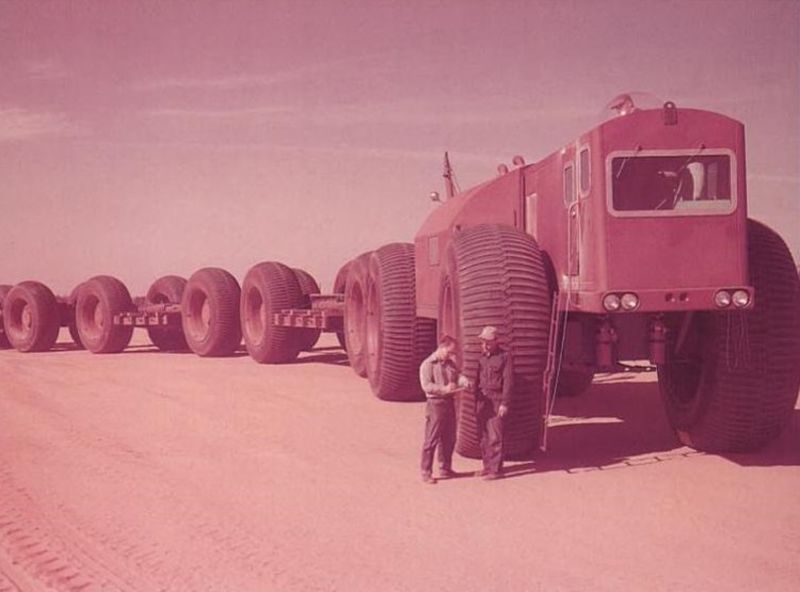
After testing it at their proving grounds in Houghton, Michigan, TRADCOM accepted the LCC-1 and sent it to Greenland, where it roamed around the north for some time, until making its last cargo run in 1962. The locomotive still exists and has found a home outside the Yukon Transportation Museum.
The LCC-1 was such a success that the Army contracted a larger one in 1958. This new one, dubbed the TC-497 Overland Train Mark II had several new features, including a gas turbine engine to replace the 600 hp Cummins engine the LCC-1 used, 3 more of these engines spread across the rest of the trailers for more power, welded aluminum construction for lighter weight, and steering on all the wheels including those of the trailers for better maneuverability around obstacles. The turbine engines were smaller than the old Cummins engines, which meant that there was enough room in the “control car” for sleeping quarters for a crew of six, a galley, a toilet, and even radar!

Two power cars and ten cargo cars were built for testing, stretching the total length to 570 feet, making it the longest off-road vehicle ever built, a record it still holds today. Its design was such that with the addition of extra fuel cars, it could be made even longer. Construction was finished in 1961, and after preliminary testing in 1962, it was finally handed over to the army and shipped to the Yuma proving ground. However, although it had performed well in tests, the army decided that with newer, more powerful heavy-lift helicopters, they didn’t need the overland train anymore, so they gave up on the idea. The Mark II’s many trailers ended up being scrapped, but the locomotive survived and is still at Yuma to this day. Although none of the surviving overland trains still run, a part of them lives on in the form of a Bigfoot monster truck that was built using some of their massive tires:
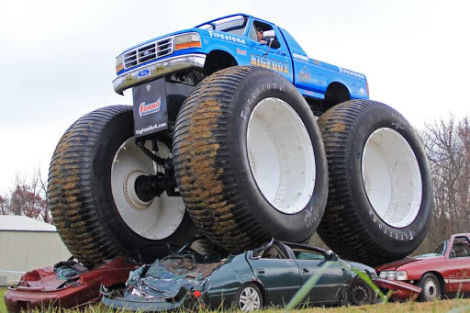
And so ends the story of the longest off-road vehicles ever built.